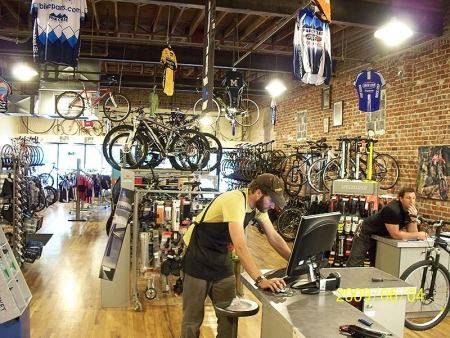If you are ready to go tubeless, there are a few things to check off before saying goodbye to tubes forever. Running a tubeless system requires specific wheels, tires, and valve stems. These all work together to form a good seal and prevent the tire from slipping off the wheel. Installing tubeless tires with the help of a tire lever and an air compressor will help speed up the process, but fear not, it is still possible with a floor pump! This article will cover everything you need to go tubeless, so keep reading and you will be riding tube-free before you know it!
Necessary Items
- Tubeless Ready Wheels
- Tubeless Ready Tires
- Tubeless Valve Stems
- Sealant
- Tire Levers
- Air Compressor (ideal) or Floor Pump (not ideal)
Tubeless Ready Wheels
Tubeless-ready wheels are a must-have for going tubeless. These are standard on most mountain bikes these days, and even some road and gravel bikes. If you have a newer bike you should be ok, but here is how you can identify a tubeless-ready wheel just in case.
“The most reliable tubeless systems are those marked UST (Uniform System Tubeless standard). Rims and tires must meet a certified standard to use the UST label. UST rims will have either no nipple holes in the rim tire bead or these holes will be completely sealed. The UST rim bead seat is designed to accept and hold the beads of the UST tires. UST tires can be used on a UST rim without tire sealants.
Another option is commonly known as “tubeless ready” or “tubeless compatible”. There is no set standard that a product must meet in order to use these labels. Each company decides what it considers to be “TR” or “TC”. The various “tubeless ready” components may or may not match between manufacturers.” – Park Tool
Another way to tell if your wheels are tubeless ready is if they came stock with rim tape. If for some reason the wheel wasn’t sealed with rim tape, it can need to be done using Guerilla Tape or a tubeless specific rim tape.
Tubeless-Ready Tires
Similar to tubeless-ready wheels, tires will be marked with UST, TR, or TC labels. Tubeless-ready tires are designed to hook into the wheel and form a good seal. In addition to forming a good seal, tubeless tires are constructed with different materials. They are made with a thicker, nonpermeable casing whereas non-tubeless tires are made with different materials that will actually seep air and sealant over time. If your bike has tubeless-ready wheels, it almost certainly has tubeless-ready tires. If you are upgrading to a tubeless system, make sure the tires and wheels are both tubeless-ready!
Tubeless Valve Stems
Tubeless valve stems form an airtight seal around the valve hole. Airtight is the name of the game when it comes to a tubeless system. Valve stems come in a variety of colors and sizes. 35-44mm is the standard range for mountain biking, and road bike valve stems come even longer for those deep carbon wheels. Valve stems can be a creative way to match your bike’s color scheme, too!
Sealant
There are plenty of options when it comes to sealant and there is no right or wrong answer. The most popular sealants we use and sell at Peak Cycles are Orange Seal Endurance and Stans Race. Both of these sealants work very well and are designed to last longer than most. It is still recommended that you refresh your sealant every 6 months or so!
Tire Levers
For the installation process, having tire levers will make it easier to get the tires on. Tire levers can also be used to set the bead, making it easier to inflate the tires if you are using a floor pump!
Air Compressor or Pump
This is the final piece of the puzzle and will determine how easy the installation goes for you! An air compressor will fill the tire with air rapidly and snap the bead into place before air can escape. With a floor pump, this isn’t the case. It’s still possible to make it happen though! Check out this great hack for setting the bead with a tire lever.
Final Checklist
- Tubeless Ready Wheels
- Tubeless Ready Tires
- Tubeless Valve Stems
- Sealant
- Tire Levers
- Air Compressor or Floor Pump
There are plenty of videos on YouTube that will walk you through a tubeless tire installation, but here are a few tips from us. When adding sealant, we recommend pouring sealant directly into the tire. We find this works better than going in through the valve stem because it makes less of a mess and prevents clogging. When inflating the tire, we recommend removing the valve core and positioning the valve stem at either 3 o’clock or 9 o’clock. This will give you a better shot at setting the bead quickly and keep sealant from trying to escape through the valve stem! Give the tires a good spin after and you should be good to go!

